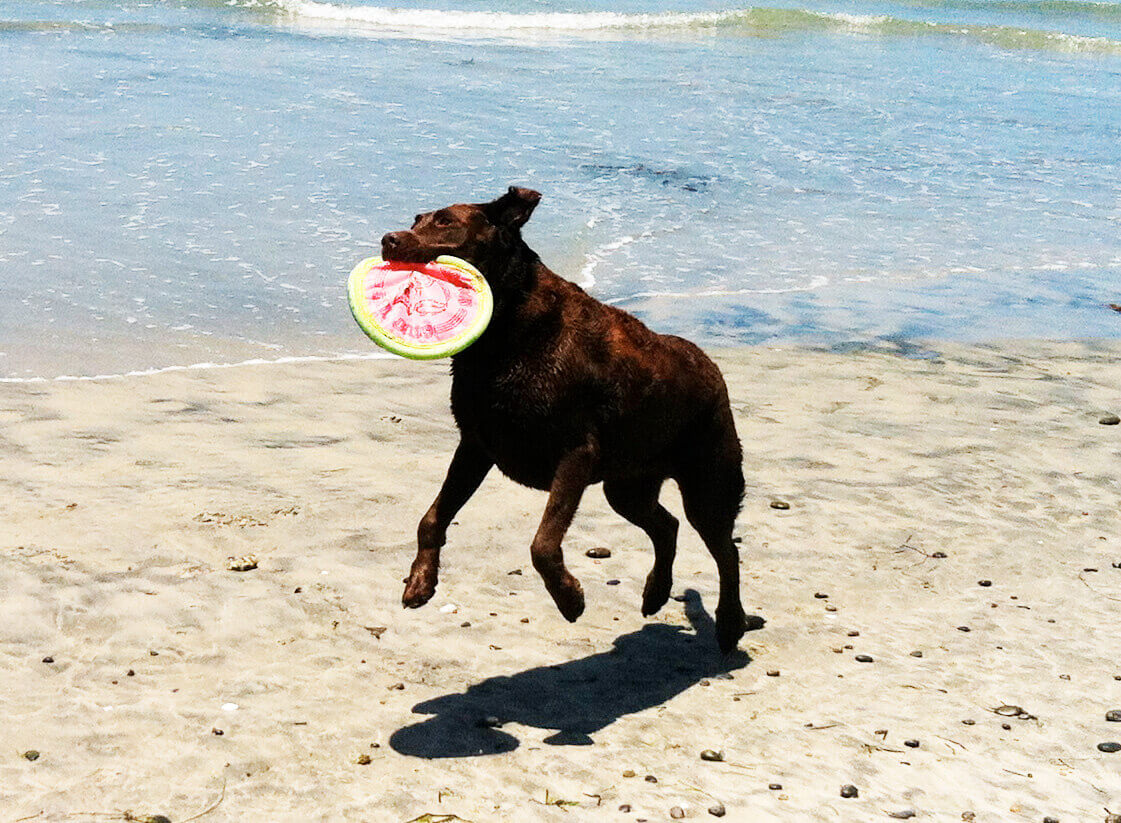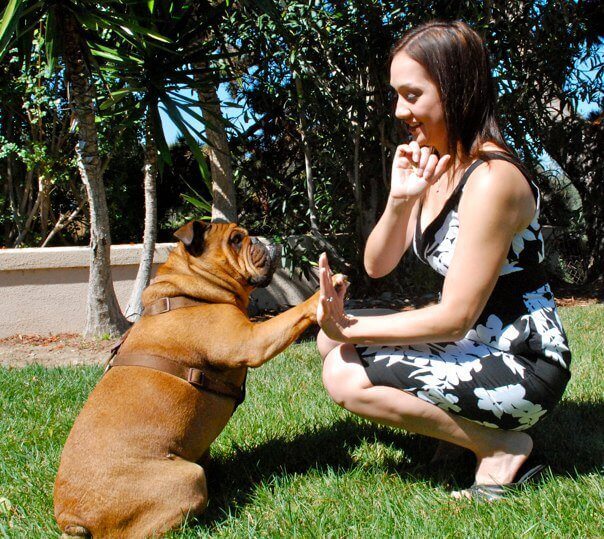By Dr. Kathy Boehme
Obesity is an accumulation of excessive energy stored by adipose (fatty) tissue sufficient enough to contribute to disease. It is the most common form of malnutrition in our companion animals and it is growing in frequency due to an increasingly sedentary lifestyle coupled with highly-palatable, energy-dense food sources.
Obesity can significantly increase the risk of various diseases and can negatively impact both the quality of life as well as the life span of our pets.

Photo Credit: pouchcotato Flickr
Conditions associated with obesity include:
- Orthopedic disease
- Insulin resistance
- Pancreatitis
- Cancer
- Heart and lung disease
- Increased risk of problems during labor
- Decreased exercise tolerance
- Increased anesthetic risk
In cats, this risk also includes fatty liver disease, lower urinary tract disease and skin disease.
Know the score

The most practical and objective way of determining your pet’s healthy weight is to use a visual guide known as Body Condition Score or BCS. Veterinarians use a BCS to standardize the level of a pet’s weight and formulate a diet and exercise plan that best suits his/her body, activity level and lifestyle.
Unfortunately, many pets are already overweight by their one year visit. Just like in humans, the treatment of obesity is a much greater challenge than prevention.
Count calories
If your pet is overweight, it is important to calculate all the calories he/she is consuming within a 24-hour period. This should include his/her regular diet, treats, people food and supplements, such as fish oil. Most weight loss requires a 25 to 40 percent drop in daily calories.
In dramatically decreasing the amount of a kibbled maintenance diet, we run the risk of not feeding enough protein and other nutrients. Prescription weight loss diets can be a good choice for severely overweight dogs, while high protein diets are an alternative for dogs and cats that do not have as much weight to lose but still need to cut back.

For dogs, I also add non-starchy vegetables not only to bulk up the amount (they are far less calorie dense than kibble), but also to increase the phytonutrients in the diet.
Canned food diets can be more accurately measured and actually improve satiety because of their water content, but of course also greatly increase the cost over dry kibble. In cats, this is certainly an option, but it may not be for a large breed dog.
A calorie allowance for treats should be factored in, but they should not add up to more than 10 percent of the total daily calories and should not be empty calories, either. Instead, make those calories a healthy, nutrient-dense snack. I especially like using vegetables for treats. The USDA Food Composition Database is a great resource for determining calorie information of various household commodities.
Exercise
The foundation of weight loss in dogs is caloric restriction; however, physical activity should also be considered. Exercise will preserve muscle mass during weight loss and may even increase the pet’s metabolic rate.
The ideal exercise program for dogs is dependent on various factors, including age, environment and concurrent disease. A customized plan should be developed for each pet and adjusted accordingly, just as with diet. Initiating an exercise regime requires a great deal of commitment, but can have very effective results. For older or very sedentary animals, food balls or puzzles may be used (you can find these on Amazon).

Keep track
Once a weight loss regime is started, pets should be weighed every two to four week and a BCS should be recorded. Try and shoot for one to two percent of body weight loss per week. In some pets, it can take a month before weight loss even begins.
If weight loss is not occurring, the calorie allowance needs to be readjusted. A recheck exam with your veterinarian should also be scheduled if weight loss is not starting within four to six weeks to revisit the plan and review feeding practices. For example, is the appropriate measuring cup being used? Are all members of the household on board with the plan or could there be someone who is sneaking treats? Does the dog or cat have access to food from another pet in the household or a neighbor?
If the pet’s weight loss is greater than one or two percent of body weight per week, calories should be increased by 10 percent and the pet should be weighed again in two weeks.
Don’t forget that as weight loss is occurring, the rate of loss may also decline as the dog or cat’s metabolic rate adjusts to the decrease in energy intake. We can respond to this plateau period by decreasing calories by another 10 percent.
To determine the time required to reach your pet’s goal, simply use his/her BCS along with the desired rate of weight loss. For example, if you are aiming for a rate of one percent body weight per week and your pet is 20 percent above his/her ideal body weight based on a BCS of 7/9, it will take approximately 20 weeks to reach that goal. If you are aiming for a rate of two percent each week, it will take half that amount of time.
Once the ideal body weight is reached, congratulations for you and your pet are in order! Unfortunately, however, pets have the same problem with rebound weight gain as humans do. The commitment to weight maintenance needs to be just as strong as weight loss or your hard work will be reversed surprisingly quickly.

An effective strategy to avoid rebound weight gain is to increase the amount previously fed for weight loss by 10 percent and continue regular weight checks. Many dogs on a therapeutic prescription diet for weight loss do better if they stay on that diet. If they are switched to a different diet, the amount of food must be adjusted based on the calories in the new food. Keep in mind that all foods have different caloric densities that need to be taken into account.
While the battle against obesity requires dedication and discipline, the rewards of an ideal body weight — for both the pet and the owners — are well worth the effort. Ask your veterinarian how to get started!
Call us today at (760) 456-9556 or schedule your pet's appointment conveniently online!

